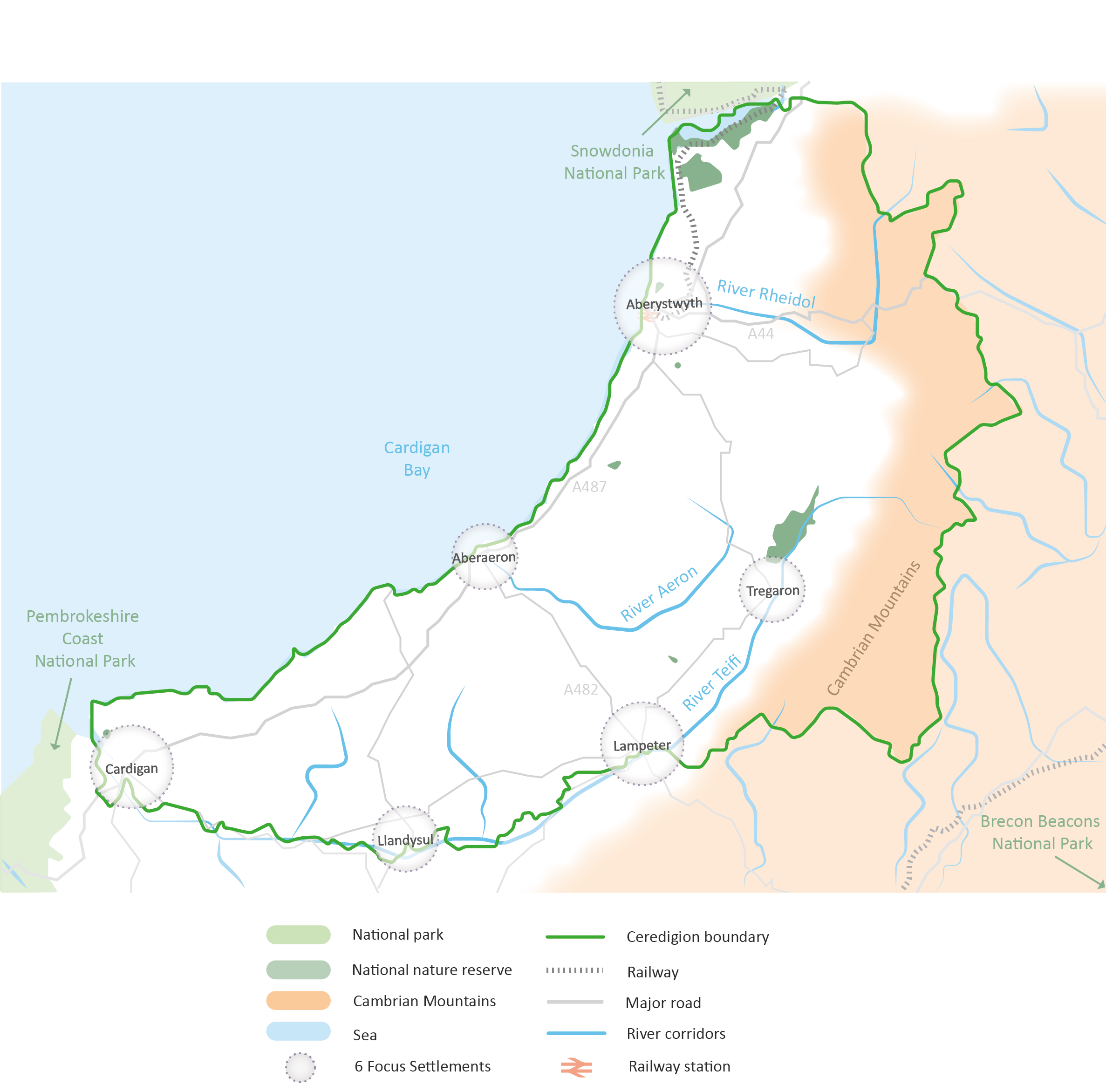Ceredigion in context

As a County, Ceredigion is relatively sparsely populated and ‘sandwiched’ between two National Parks – the Pembrokeshire Coast National Park to the south and Snowdonia National Park to the north. The Wales Coastal Path also runs for 60 miles along the length of its western boundary. #
The County is also one of the heartlands of the Welsh language – with 47% of residents speaking Welsh as per the 2011 census.
The County’s setting has given Ceredigion a long history as a County of tourism honeypots and leisure destinations. For local residents, it offers the potential for a lifestyle rich in opportunities to connect with the natural environment around them.
The ‘jewel in the crown’ of Ceredigion’s green and blue infrastructure (GBI) network is its extensive coastline – which includes several stretches of heritage coastline, spectacular beaches and estuary habitats. The marine environment along the coast is protected by a series of Special Areas of Conservation (SAC) and is rich in marine wildlife. This includes Europe’s largest pod of bottlenose dolphins.
However, other parts of the ‘blue network’ also play a key role. As much as its coastline, Ceredigion is defined by rivers. Two great estuaries – the Dyfi in the north and the Teifi in the south – form its natural boundaries. The mouths of rivers (‘abers’) have given Ceredigion its main harbour towns of Aberteifi, Aberaeron and Aberystwyth.
Between these features there is a landscape of farmland, wooded river valleys and small market towns. To the east, the Cambrian mountains provide a remote wilderness across a wild moorland plateau crossed by ancient routes.
However, Ceredigion is also facing significant challenges. There are concentrated areas of socio-economic deprivation, largely in urban areas. In these areas, access to nature and open space is often unequal.
In recent years, Ceredigion has experienced periods of negative net migration. The 2021 census results show a population decline of almost 6% in Ceredigion since 2011 – the largest in Wales and largely driven by younger age groups moving out of the County.
Biodiversity decline is having significant impacts on Ceredigion’s natural environment and its long-term resilience. This requires urgent action to safeguard and better connect the County’s habitat network.
Water quality in particular is increasingly recognised as a crisis, which is halting the further development of the County. This is due to ”hyper-nutrification” and pollution from water treatment plants, residential development, agricultural practices and mine water.
Climate change projections mean that changing temperatures are set to exacerbate these challenges and drive the need for the natural environment to adapt to new pressures.